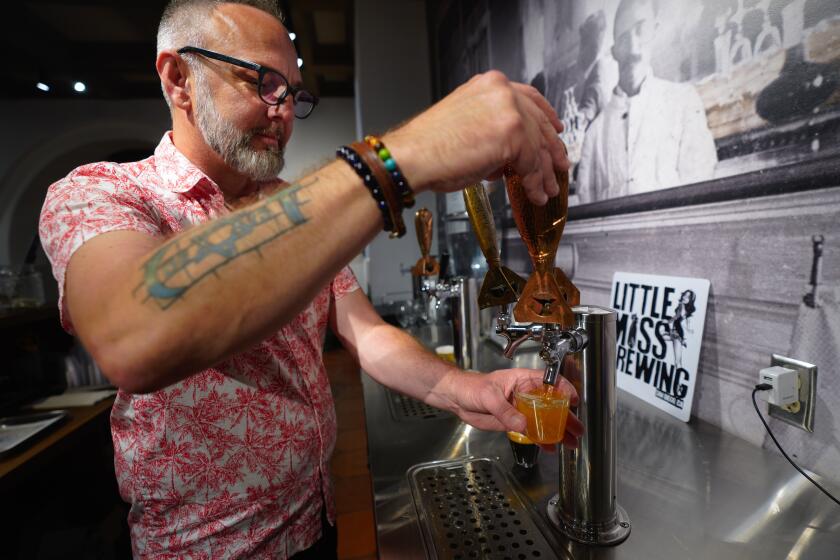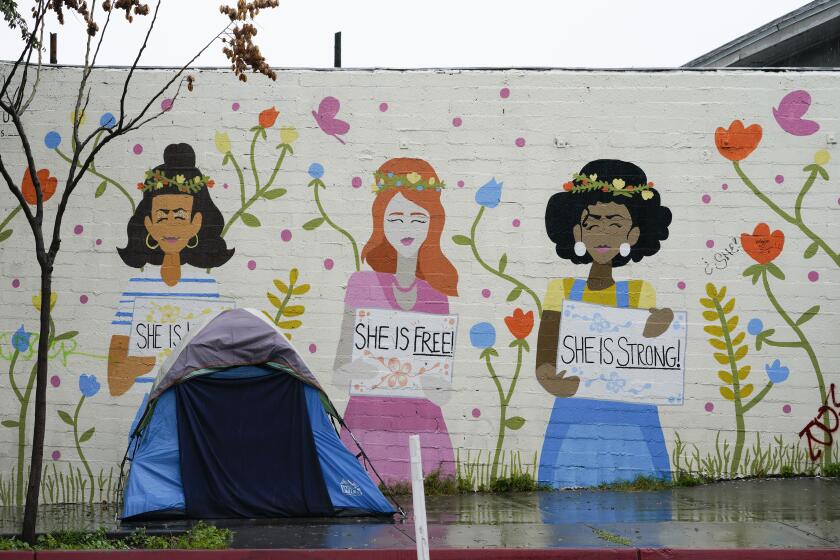NCTD project punctured city sewer pipe
Three years later, the damage still hasn’t been fixed
View the photo gallery: NCTD project damage to city sewer pipe
Contractors working for the North County Transit District installing conduit for a state-of-the-art train safety system punctured a sewer transmission pipe in Rose Canyon nearly three years ago, and the damage still has not been repaired.
The through-and-through puncture of the 45-inch main transmission wasn’t discovered for more than a year, when city crews doing a routine check discovered the damage.
Officials with the city and the transit district said no waste ever leaked from the damaged pipe, which carried raw sewage to the city processing facility. But as a precaution until the break is fully repaired, in San Diego city crews in May patched around the area where the conduit puctured the pipe.
The city, NCTD, contractor MP Nexlevel and its insurer haven’t been able to come up with a final plan to fix the puncture. On Thursday, days after U-T Watchdog inquired about the pipe, all parties got together on a conference call to discuss repairing the damage.
The pipe puncture is the latest example of problems NCTD has had overseeing contractors who work for the agency. Over the past several years federal audits have identified an increasing number of deficiencies with how the agency oversees contracts and administers federal grant money.
A spokeswoman for NCTD said on Thursday that fixing the sewer pipe could cost between $250,000 and $500,000, which will be paid by the contractor. Because the conduit has fiber optic lines through it, those will have to be removed and relaid too.
The conduit was being laid as part of the district’s installation of an $87 million rail-safety system, known as “positive train control,” on its Coaster commuter line. It uses wireless communications, satellites and computers to track where trains are, slowing or stopping them as needed to prevent accidents.
The complex system is mandated by the federal government for all commuter trains, and was supposed to be in place nationally by the end of this year. Many rail lines, citing the complexity of the technology and the challenges of getting it in place, have said they won’t be able to meet that deadline.
NCTD said in a report in March that it will miss the deadline, and the system won’t be in service until early 2017.
In June, that deadline slipped again, and the agency said system is now not expected to be in place until April 2017, nearly 16 months beyond the federal deadline.
NCTD made the decision to operate the system using fiber optic lines, instead of an alternative that uses fixed antennae deployed alongside the railroad tracks. The fiber optic lines run beneath ground near the tracks, housed inside conduits.
NCTD contracted with MP Nexlevel, a Minnesota company, to install conduit and fiber optics along a 38-mile stretch of track from Oceanside to Old Town. The contract, initially for $5.2 million, later rose to $6.5 million. It was the largest of three agreements the agency made to install the lines north and south along the COASTER tracks.
Work began in January 2013, so the puncture occurred at the start of the project and went unnoticed. In February 2014 the contract was increased by $1.5 million because of “unforeseen conditions” along the entire stretch of the rail line that made installing the conduit difficult, according to NCTD documents
A few months later, in May 2014, a routine check of the line using a camera revealed the damage, said Clayton Welch, chief deputy city attorney for San Diego. The city regularly assesses the lines in the entire system for wear, damages and breaks.
MP Nexlevel had gone through the required procedure of having underground lines marked before it began digging. The city also has records showing it went out and marked the area where the pipe was. Why the puncture happened is not clear.
“For some reason when they drilled in that area, they went deeper than they should have and drilled through the upper third of the pipe,” Welch said.
A call to a representative of MP Nexlevel was not returned.
In addition to the problems found in the federal audits, other issues with contractors hired by the agency have also surfaced.
In one instance the costs for running a transit service for the disabled have increased by more than a third over the past two years. That is partly because ridership is up, but is also due to a failed switch to a new, lower-cost contractor in 2011.
After two years of a six-year deal the contractor, American Logistics Inc., abruptly terminated the deal. The service, which used a new “brokerage” model that subcontracted out rides to driving contractors, had been criticized for high turnover among drivers, and missed drop-off and pick-up of riders.
The agency ended up hurriedly hiring a new contractor, First Transit, whose operating costs were higher than the previous provider.
Get Essential San Diego, weekday mornings
Get top headlines from the Union-Tribune in your inbox weekday mornings, including top news, local, sports, business, entertainment and opinion.
You may occasionally receive promotional content from the San Diego Union-Tribune.










